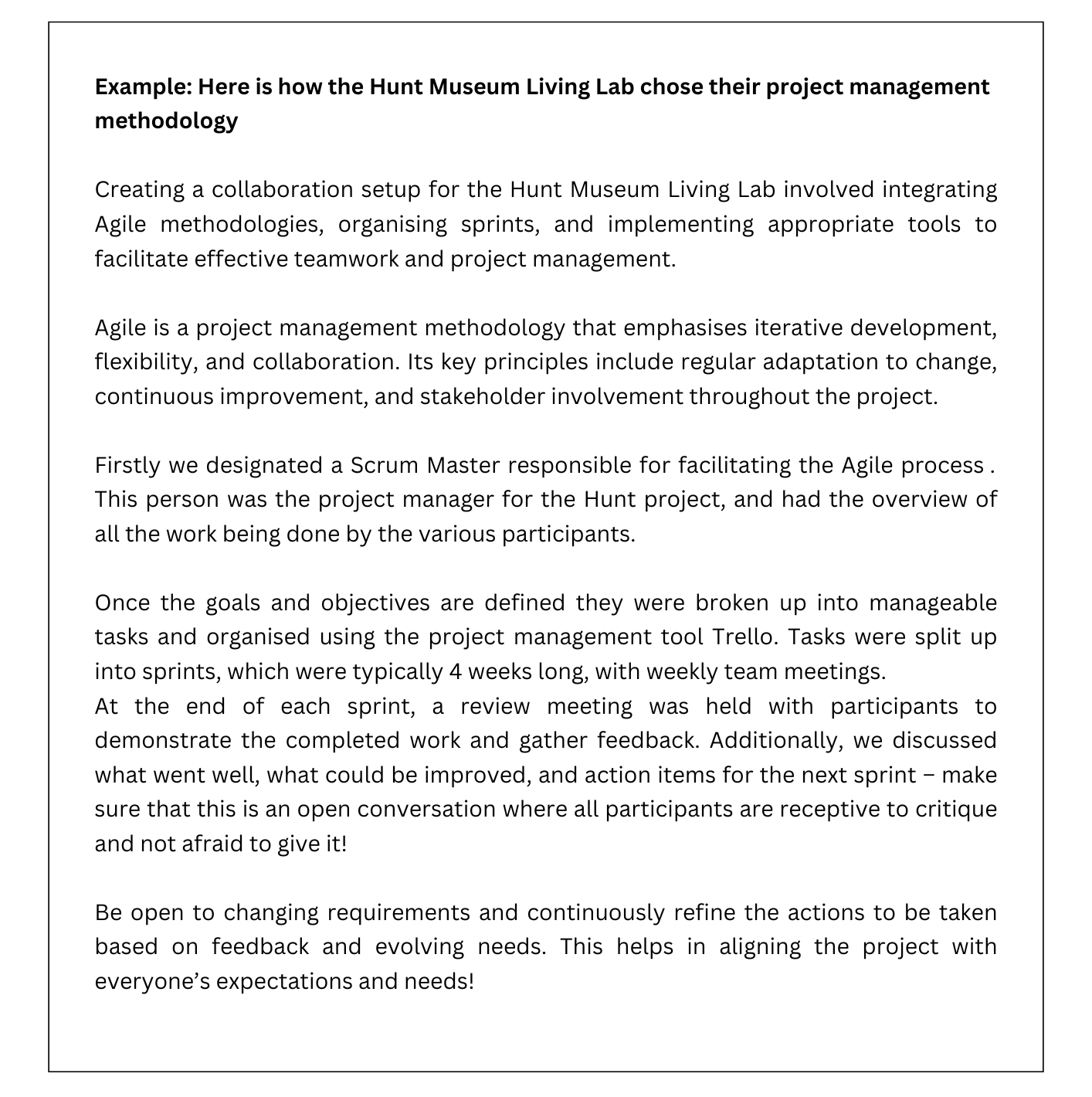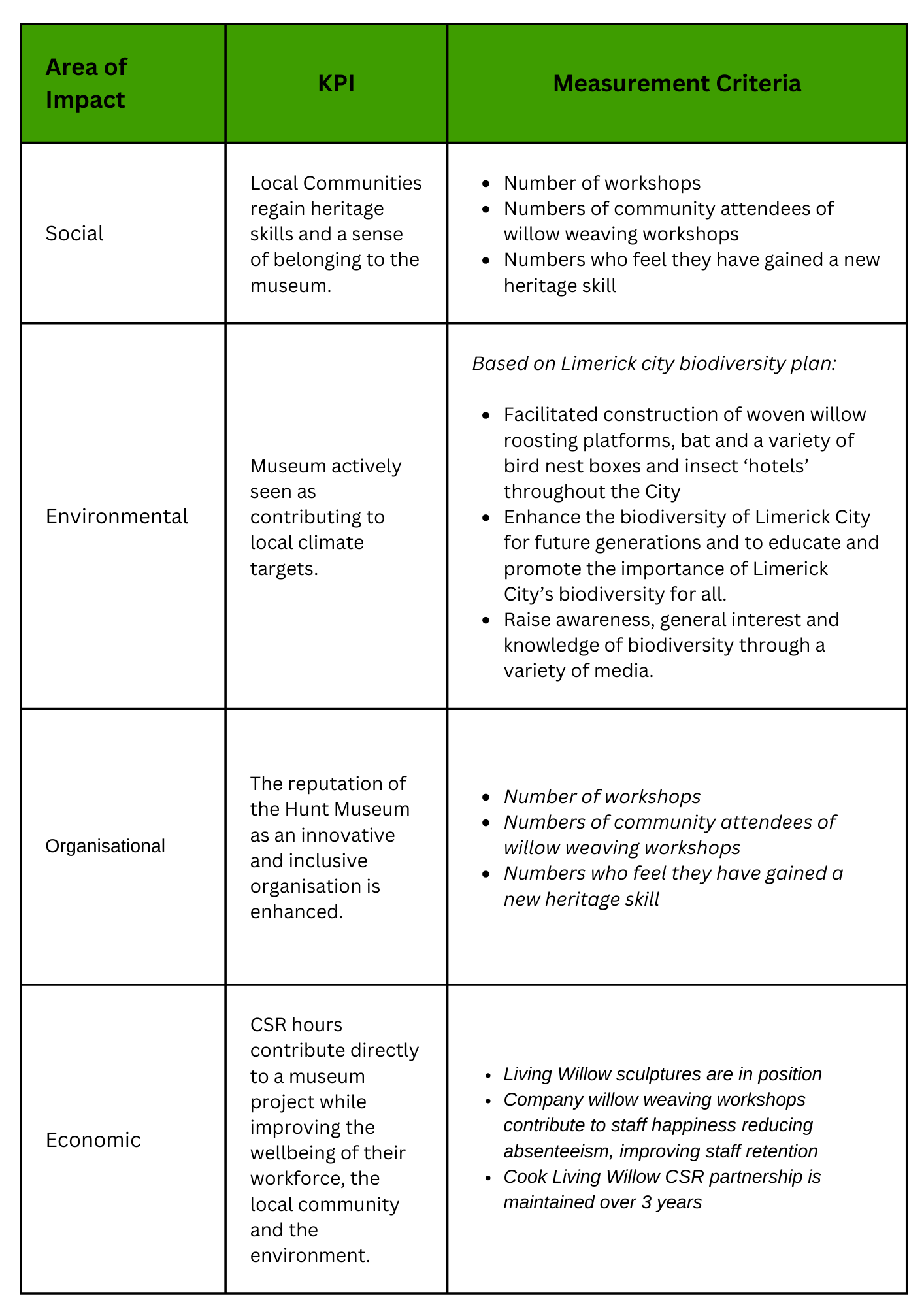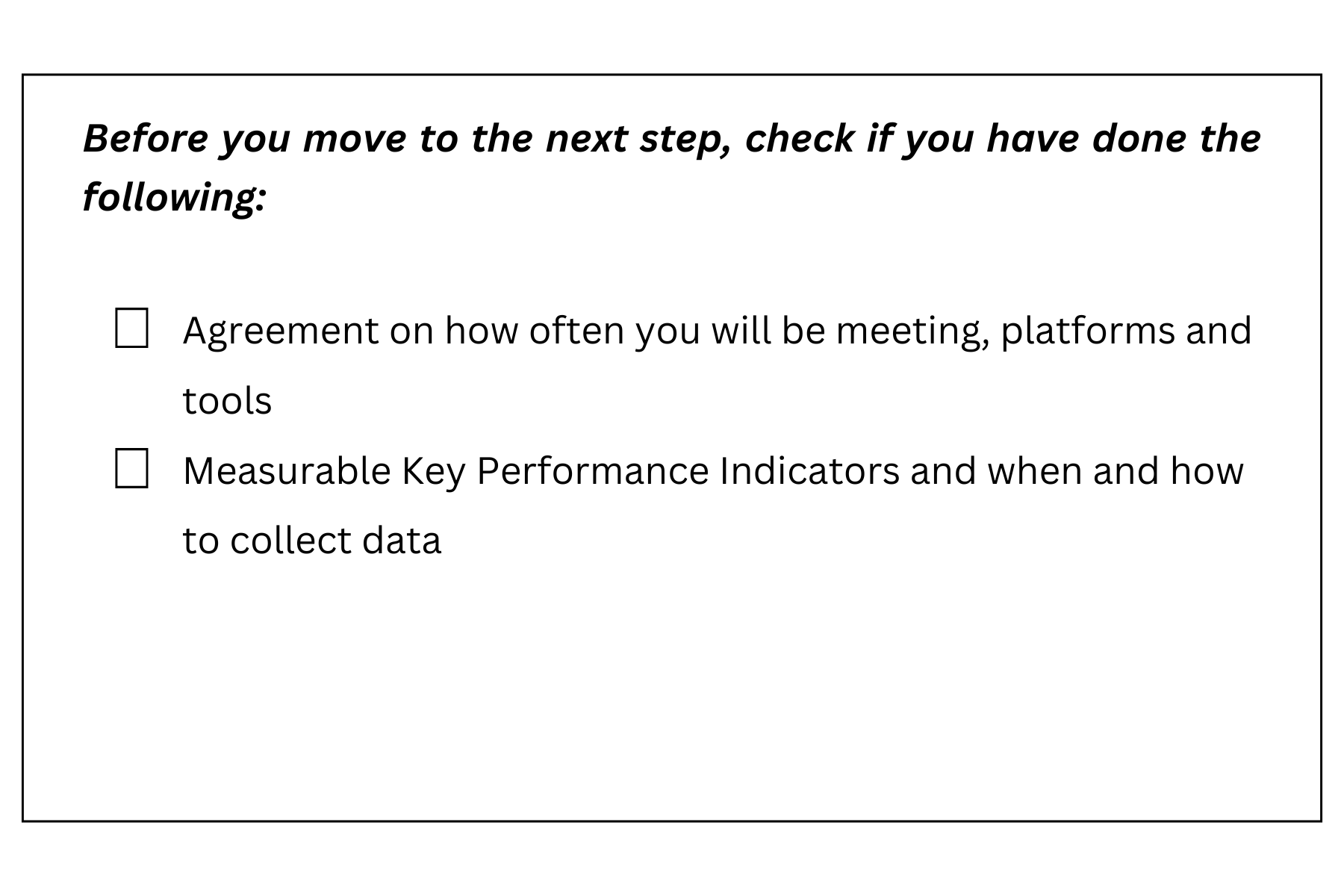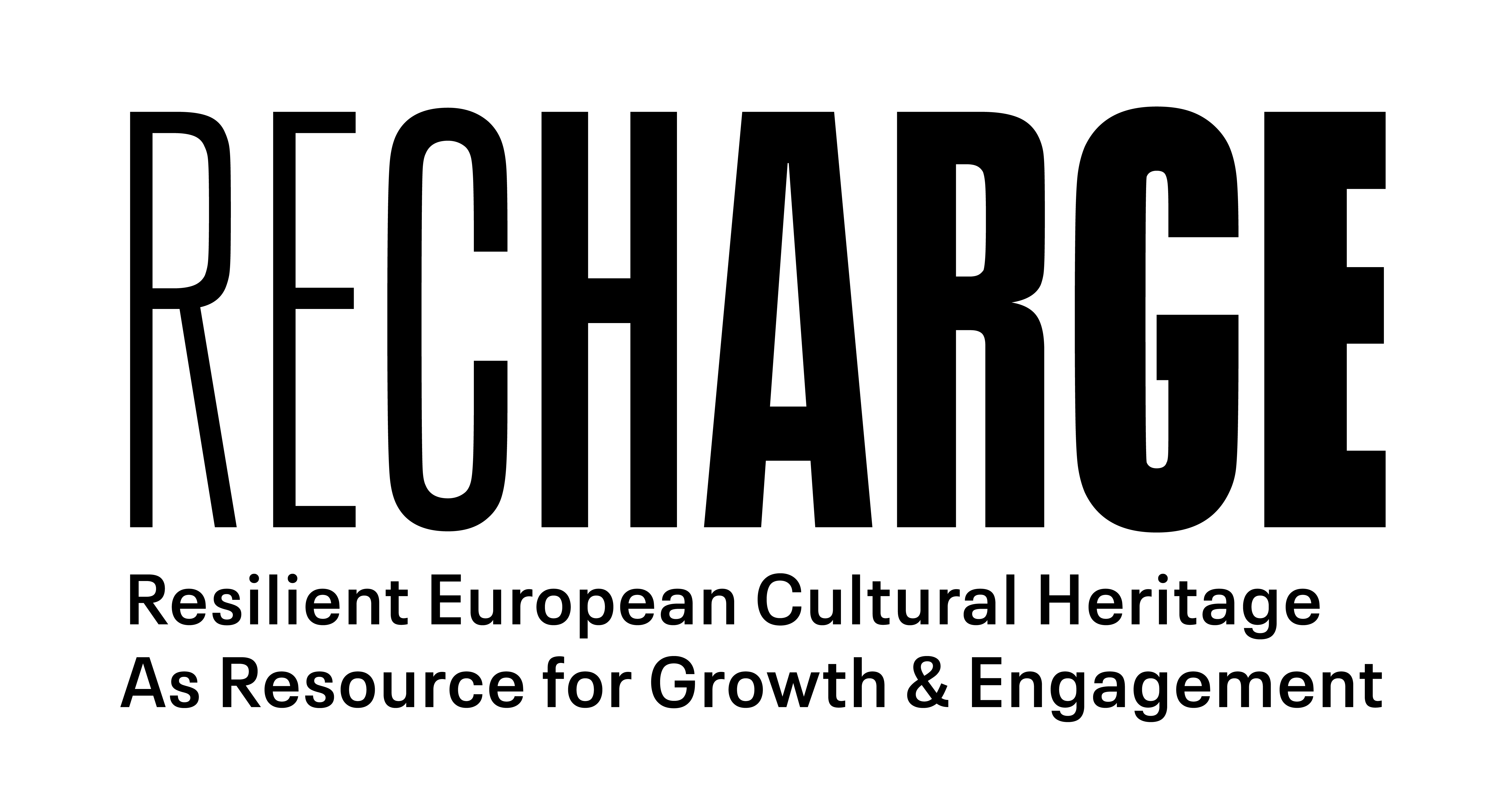Implementing Cultural Participatory Business Models: The Living Labs Approach
Living Labs
Choosing a Project Management Methodology
It’s time to bring your chosen project idea to life!
Before getting started with your project, it is helpful to set up some simple structures for working together. This is an opportunity to voice and align expectations. As the project develops you can also encourage the development of organic processes and ideas.
- Choose your project management methodology. Consider the number of meetings, the frequency of meetings, and the timeline and requirements needed to develop a product/service. You can choose from existing styles of working together, such as AGILE.
- Agree on which tools and platforms you want to use to communicate and work together. This will help everyone to stay involved and ensure that important information isn’t getting lost. The tools and platforms may need to change as the project progresses.
- Whichever style of collaboration you choose, remember to maintain communication with all participants, and if possible involve them in this decision. This will help to align expectations and choose a collaboration style that is achievable for everyone involved.
.png)
Set up Key Performance Indicators (KPIs) for the Living Lab Project
Assessing the impact of your project is an important part of the Living Lab methodology. Creating and measuring Key Performance Indicators (KPIs) will help you to demonstrate the impact of your project and whether you managed to achieve your value proposition. KPIs are quantifiable measurements that capture desired results and outputs. Defining these together with stakeholders can be helpful for agreeing on priorities. This should be a group exercise.
In order to get a complete picture, it is important to define these KPIs at the start of your project and assess them over time. You need time to understand the change you are generating through your actions.
How to do this:
Break down your value proposition into specific objectives that can be measured - e.g. number and gender of stakeholders involved in your actions, number of events, use of institutional resources, etc. Need inspiration? Have a look at the Europeana standardised question bank.
In the design phase, try to think especially across social, economic, organisational, and environmental areas of impact. Do you think a relevant impact area is missing? Feel free to add it to your assessment. It is crucial that impacts you want to assess and understand are tailored to your project’s scope. Universal KPIs fitting everyone do not exist.
The 4 recommended areas of impact to be taken into account are:
- Social - analyses changes the Living Labs have on the involved communities, their motivation, well-being, social cohesion and sense of belonging, etc. How many and who are your volunteers? Why are they involved? How does the involvement change their everyday lives?
- Economic - examines the effect of the Living Lab process and activities on the economic side of things for the involved stakeholders. It usually measures changes in business revenue, business profits, personal wages, and/or jobs.
- Organisational - looks at possible internal changes in organisations involved in works of the Living Labs - was there a change in organisational strategy? Were new workflows or jobs created to address the needs of the Living Labs process?
- Environmental - accounts for the environmental values of actions performed under the Living Labs and understands their impact on the environment, like the production of carbon dioxide.
Once you have agreed upon the KPIs for your project with your stakeholders, create a schedule for when you will collect data and choose the methods you will use for that (eg. surveys, interviews, analytics, etc.). You want to have some time between these assessments to allow change to happen but you also need to make the plan realistic and operate within the project’s timeline. Planning is key.
Example:
These are the KPIs co-designed by the Hunt Museum Living Lab with their stakeholders to measure their impact:
.png)
.png)





